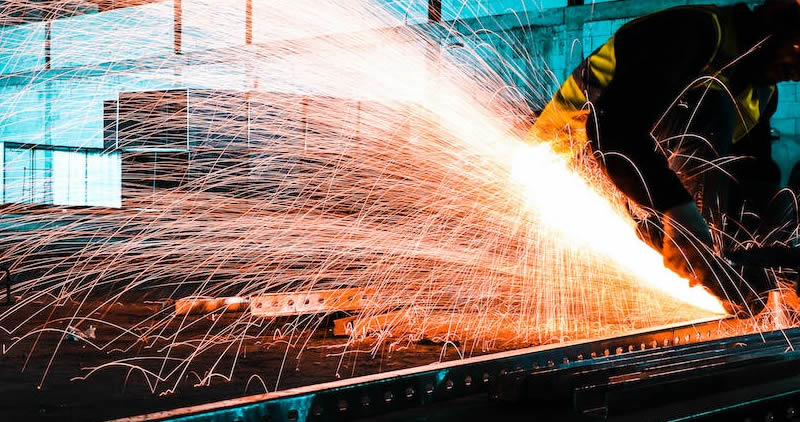The precision of a laser beam has been revolutionizing the industrial sector by enhancing efficiency and accuracy in various processes. Understanding laser focus and beam quality is crucial for industrial manufacturers who aim to improve production and quality control processes. In this article, we delve into the world of laser technology, exploring its application, benefits, and the critical aspects of beam quality that industries need to consider.
The term laser focus often conjures thoughts of intense, concentrated energy. This concentration is an essential feature of laser technology, especially in its industrial applications. The synergy between beam quality and laser focus significantly influences the outcome of processes like cutting, welding, and engraving. To truly appreciate the value of lasers in industry, it’s necessary to understand how focus and beam quality work hand in hand.

What is Laser Focus?
Laser focus refers to the fine-tuning of the laser beam’s diameter and intensity for precise application. In industrial terms, this precision means cleaner cuts, accurate drilling, and meticulous engraving. Industries such as metal fabrication benefit immensely from highly focused laser beams, which deliver efficient energy to exact locations, reducing waste and speeding up production.
The Role of Beam Quality
Beam quality is a term that encompasses various characteristics of the laser beam, including its brightness, mode structure, and the ability to maintain focus over a distance. High beam quality is indicative of a laser’s ability to deliver a uniform energy distribution, which is paramount in processes that require consistent precision and power. Learn more about metal cutting with lasers.
Factors Affecting Beam Quality
Several factors can affect beam quality, including the laser’s wavelength, the optical system used, and the environment. For instance, atmospheric conditions like humidity and temperature can influence beam propagation. Additionally, the quality of optical components such as lenses and mirrors used to focus and direct the laser beam plays a crucial role.
Wavelength Considerations
Different applications may require specific wavelengths. For instance, CO2 lasers with longer wavelengths are ideal for cutting non-metallic materials, while fiber lasers with shorter wavelengths are often used for metal processing. Each wavelength offers unique advantages, and choosing the right one can significantly enhance performance.
Applications in the Industrial Sector
Industries benefit from high-quality laser focus and beam quality in varying ways. In metal cutting, precise lasers help achieve smoother edges and intricate details. Industries such as automotive and aerospace rely on lasers for precision and speed, attributing significant advancements in component manufacturing to laser technology.
Enhancing Production Efficiency
By ensuring robust beam quality, manufacturers can minimize errors, reduce material waste, and improve the overall efficiency of their operations. In the realm of metal works, lasers play a pivotal role, helping to minimize burrs and enhancing the quality of cuts on metals like carbon steel.
Technological Advancements
With ongoing advancements, lasers are constantly becoming more versatile. Cutting-edge developments allow for better control of beam quality and enable manufacturers to push the boundaries of what’s possible, achieving even higher precisions and faster processing times.
Adaptive Technologies
Modern adaptation techniques enhance the beam stability and its responsiveness to different materials or conditions. Adaptive optics, for instance, improve beam quality by dynamically adjusting laser parameters in real-time, which is crucial for maintaining consistency in high-precision tasks.
Key Components of Beam Quality
Understanding beam profile, divergence, and power distribution is essential for optimizing laser systems in industrial applications. Each component has a unique impact, from influencing the sharpness of the laser focus to the uniformity of the cut.
Beam Divergence and Its Impact
Divergence refers to the spread of the laser beam as it travels. A lower divergence indicates that a beam maintains its compactness over a distance, which is crucial for long-range applications. Technologies like fiber lasers often boast low divergence, making them an ideal choice for tasks requiring deep penetration or thin, precise cuts.
Practical Steps for Improving Beam Quality
Improving beam quality involves steps such as using high-quality optics, ensuring clean and contaminant-free environments, and regularly maintaining and calibrating laser equipment. Moreover, advancements like adaptive optics provide users with greater control over beam properties, allowing for real-time adjustments to enhance performance.
Choosing the Right Laser System
When choosing a laser system, considerations must include the application requirements, desired beam quality, and the material to be processed. Heavy-duty tasks may require lasers with high power yet low divergence, while others may suffice with lesser specifications.
The Future of Laser Technology in Industry
The future promises further integration of AI and machine learning, aimed at enhancing industrial laser precision and customization. Efforts are focused on developing smarter systems capable of predictive maintenance, automatically adjusting parameters to maintain optimal beam quality, and thus unprecedented levels of accuracy.
Innovations on the Horizon
Looking forward, innovations concentrate on enhancing energy efficiency, reducing operation costs, and enabling lasers to perform a broader range of tasks with greater precision. These advancements supply the industrial sector with tools to meet rising demands while maintaining quality and speed.
Conclusion
Understanding the significance of laser focus and beam quality is vital for industries aiming to benefit from the full potential of lasers. As technology continues to advance, the role of lasers in providing unmatched precision and efficiency will only grow, making them indispensable to industrial manufacturers worldwide.

FAQ Section
What affects laser beam quality?
Beam quality is affected by factors like laser wavelength, optical system quality, and environmental conditions such as humidity and temperature.
How is beam divergence controlled?
Beam divergence can be controlled by using advanced optical components or technologies like fiber lasers, which offer lower divergence and better focus.
Why is laser focus important in industry?
Laser focus is crucial as it ensures precise application of laser energy, leading to more accurate manufacturing processes, reduced waste, and increased efficiency.
This article contains affiliate links. We may earn a commission at no extra cost to you.

